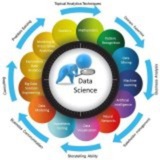38.9K subscribers
3.72K photos
31 videos
40 files
1.28K links
ads: @HusseinSheikho
This channel is for Programmers, Coders, Software Engineers.
1- Data Science
2- Machine Learning
3- Data Visualization
4- Artificial Intelligence
5- Data Analysis
6- Statistics
7- Deep Learning
Download Telegram
This channel is for Programmers, Coders, Software Engineers.
1- Data Science
2- Machine Learning
3- Data Visualization
4- Artificial Intelligence
5- Data Analysis
6- Statistics
7- Deep Learning
